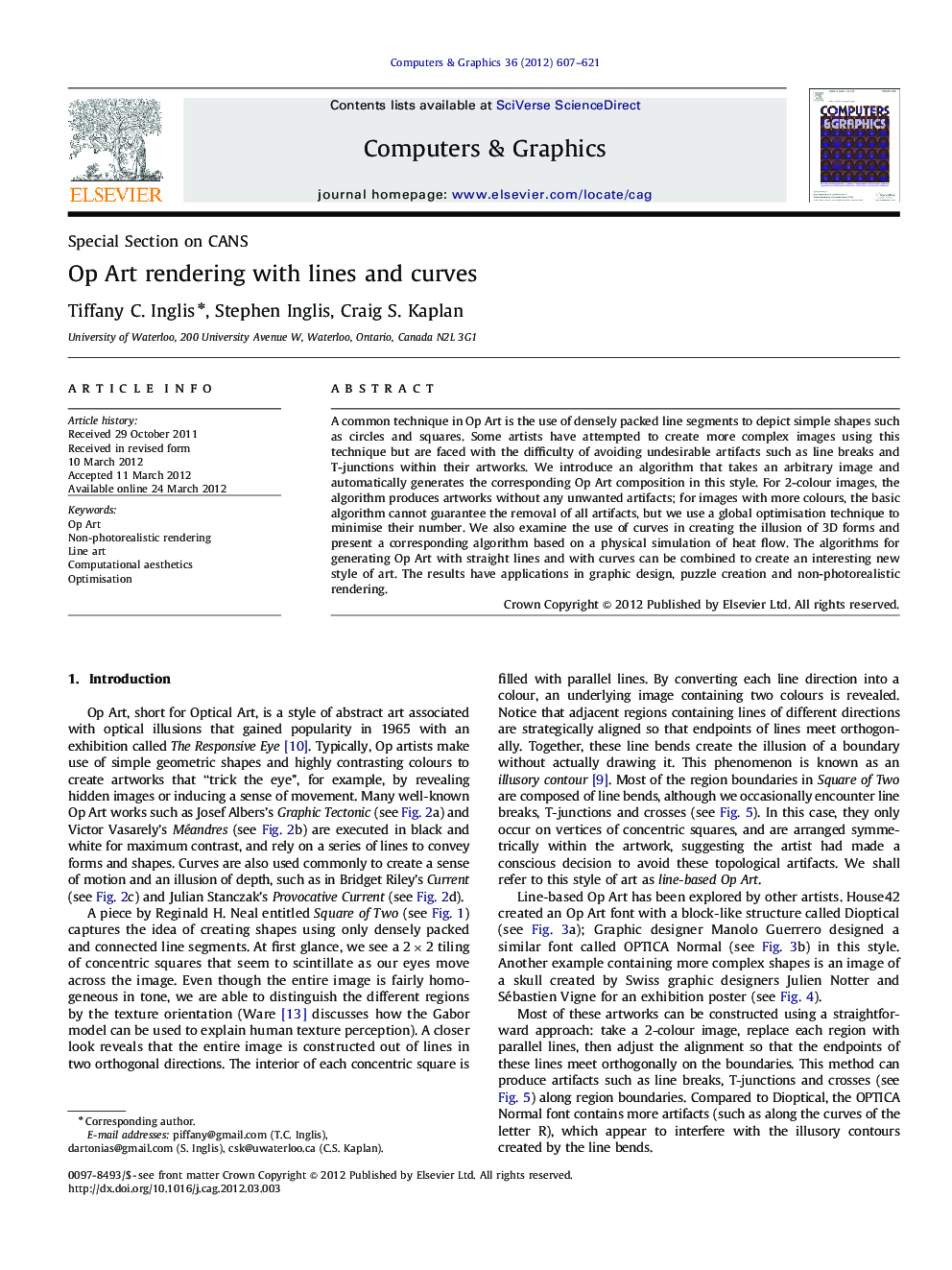| Article ID | Journal | Published Year | Pages | File Type |
|---|---|---|---|---|
| 441568 | Computers & Graphics | 2012 | 15 Pages |
A common technique in Op Art is the use of densely packed line segments to depict simple shapes such as circles and squares. Some artists have attempted to create more complex images using this technique but are faced with the difficulty of avoiding undesirable artifacts such as line breaks and T-junctions within their artworks. We introduce an algorithm that takes an arbitrary image and automatically generates the corresponding Op Art composition in this style. For 2-colour images, the algorithm produces artworks without any unwanted artifacts; for images with more colours, the basic algorithm cannot guarantee the removal of all artifacts, but we use a global optimisation technique to minimise their number. We also examine the use of curves in creating the illusion of 3D forms and present a corresponding algorithm based on a physical simulation of heat flow. The algorithms for generating Op Art with straight lines and with curves can be combined to create an interesting new style of art. The results have applications in graphic design, puzzle creation and non-photorealistic rendering.
Graphical abstractFigure optionsDownload full-size imageDownload high-quality image (132 K)Download as PowerPoint slideHighlights► We analyse two styles of Op Art involving densely packed lines and curves depicting hidden images. ► We develop optimisation algorithms to reproduce line-based Op Art. ► The traditional line-based Op Art depicting a 2-colour image is generalised to any number of colours. ► A physical simulation creates curve-based Op Art by curving a set of lines. ► A hybrid form of Op Art can be produced by combining our algorithms.
